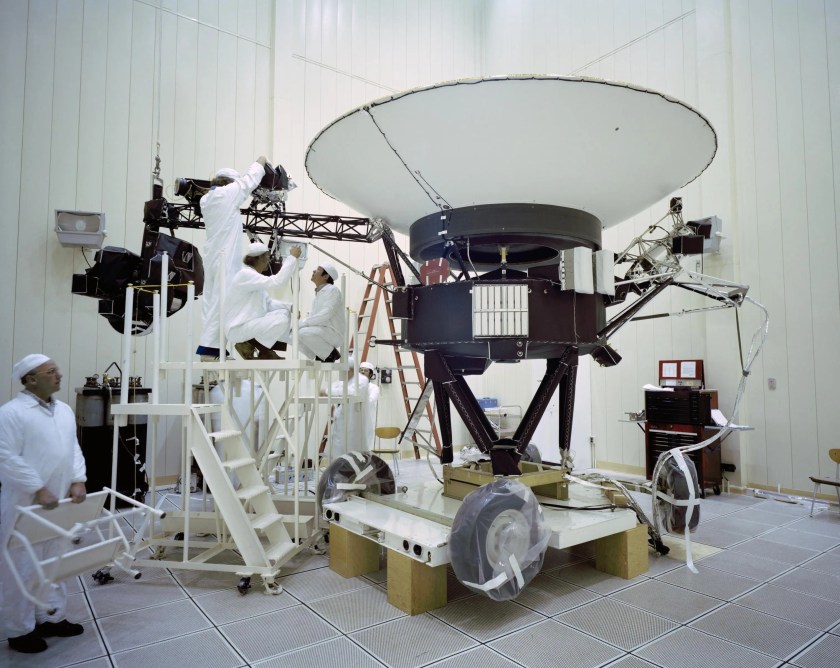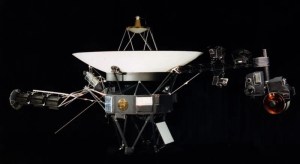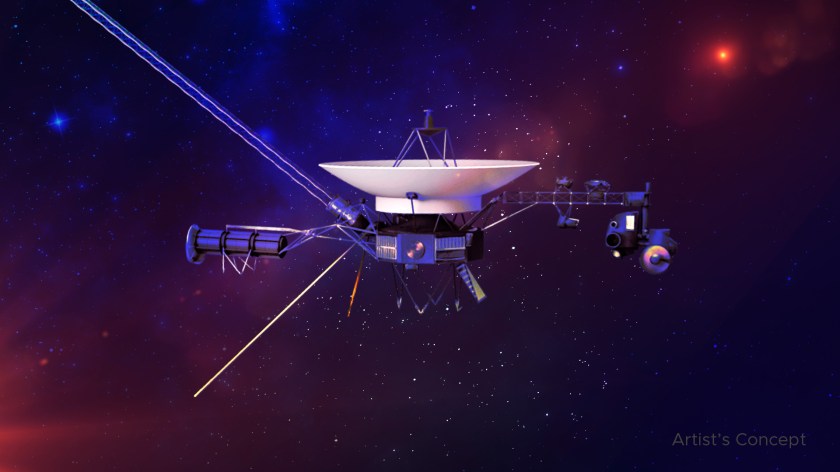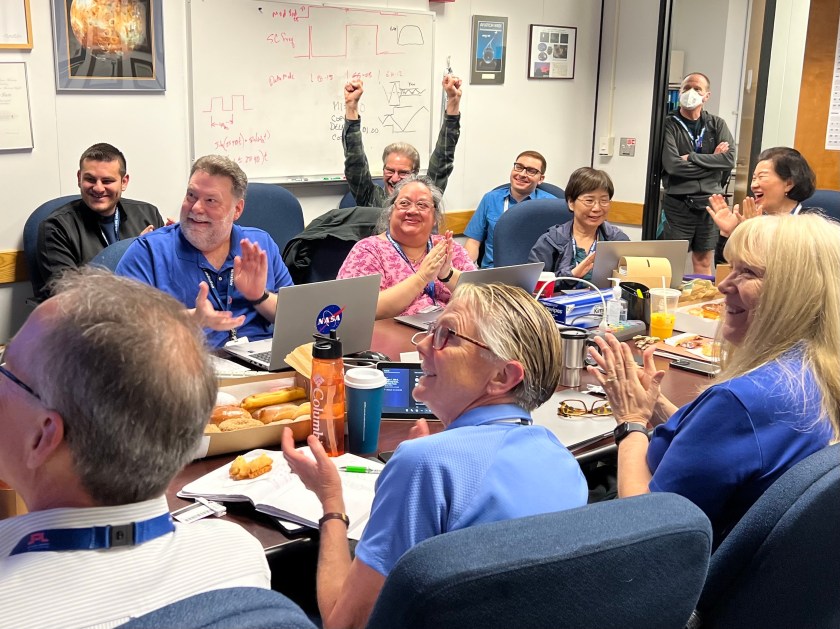
The farthest-flung human-made objects will be able to take their science-gathering even farther, thanks to these energy-conserving measures.
Mission engineers at NASA’s Jet Propulsion Laboratory in Southern California turned off the cosmic ray subsystem experiment aboard Voyager 1 on Feb. 25 and will shut off Voyager 2’s low-energy charged particle instrument on March 24. Three science instruments will continue to operate on each spacecraft. The moves are part of an ongoing effort to manage the gradually diminishing power supply of the twin probes.
Launched in 1977, Voyagers 1 and 2 rely on a radioisotope power system that generates electricity from the heat of decaying plutonium. Both lose about 4 watts of power each year.
“The Voyagers have been deep space rock stars since launch, and we want to keep it that way as long as possible,” said Suzanne Dodd, Voyager project manager at JPL. “But electrical power is running low. If we don’t turn off an instrument on each Voyager now, they would probably have only a few more months of power before we would need to declare end of mission.”
The two spacecraft carry identical sets of 10 science instruments. Some of the instruments, geared toward collecting data during planetary flybys, were turned off after both spacecraft completed their exploration of the solar system’s gas giants.
The instruments that remained powered on well beyond the last planetary flyby were those the science team considered important for studying the solar system’s heliosphere, a protective bubble of solar wind and magnetic fields created by the Sun, and interstellar space, the region outside the heliosphere. Voyager 1 reached the edge of the heliosphere and the beginning of interstellar space in 2012; Voyager 2 reached the boundary in 2018. No other human-made spacecraft has operated in interstellar space.
Last October, to conserve energy, the project turned off Voyager 2’s plasma science instrument, which measures the amount of plasma — electrically charged atoms — and the direction it is flowing. The instrument had collected only limited data in recent years due to its orientation relative to the direction that plasma flows in interstellar space. Voyager 1’s plasma science instrument had been turned off years ago because of degraded performance.
Interstellar Science Legacy
The cosmic ray subsystem that was shut down on Voyager 1 last week is a suite of three telescopes designed to study cosmic rays, including protons from the galaxy and the Sun, by measuring their energy and flux. Data from those telescopes helped the Voyager science team determine when and where Voyager 1 exited the heliosphere.
Scheduled for deactivation later this month, Voyager 2’s low-energy charged particle instrument measures the various ions, electrons, and cosmic rays originating from our solar system and galaxy. The instrument consists of two subsystems: the low-energy particle telescope for broader energy measurements, and the low-energy magnetospheric particle analyzer for more focused magnetospheric studies.
Both systems use a rotating platform so that the field of view is 360 degrees, and the platform is powered by a stepper motor that provides a 15.7-watt pulse every 192 seconds. The motor was tested to 500,000 steps — enough to guarantee continuous operation through the mission’s encounters with Saturn, which occurred in August 1980 for Voyager 2. By the time it is deactivated on Voyager 2, the motor will have completed more than 8.5 million steps.
“The Voyager spacecraft have far surpassed their original mission to study the outer planets,” said Patrick Koehn, Voyager program scientist at NASA Headquarters in Washington. “Every bit of additional data we have gathered since then is not only valuable bonus science for heliophysics, but also a testament to the exemplary engineering that has gone into the Voyagers — starting nearly 50 years ago and continuing to this day.”
Addition Through Subtraction
Mission engineers have taken steps to avoid turning off science instruments for as long as possible because the science data collected by the twin Voyager probes is unique. With these two instruments turned off, the Voyagers should have enough power to operate for about a year before the team needs to shut off another instrument on both spacecraft.
In the meantime, Voyager 1 will continue to operate its magnetometer and plasma wave subsystem. The spacecraft’s low-energy charged particle instrument will operate through the remainder of 2025 but will be shut off next year.
Voyager 2 will continue to operate its magnetic field and plasma wave instruments for the foreseeable future. Its cosmic ray subsystem is scheduled to be shut off in 2026.
With the implementation of this power conservation plan, engineers believe the two probes could have enough electricity to continue operating with at least one science instrument into the 2030s. But they are also mindful that the Voyagers have been weathering deep space for 47 years and that unforeseen challenges could shorten that timeline.
Long Distance
Voyager 1 and Voyager 2 remain the most distant human-made objects ever built. Voyager 1 is more than 15 billion miles (25 billion kilometers) away. Voyager 2 is over 13 billion miles (21 billion kilometers) from Earth.
In fact, due to this distance, it takes over 23 hours to get a radio signal from Earth to Voyager 1, and 19½ hours to Voyager 2.
“Every minute of every day, the Voyagers explore a region where no spacecraft has gone before,” said Linda Spilker, Voyager project scientist at JPL. “That also means every day could be our last. But that day could also bring another interstellar revelation. So, we’re pulling out all the stops, doing what we can to make sure Voyagers 1 and 2 continue their trailblazing for the maximum time possible.”
For more information about NASA’s Voyager missions, visit:
https://science.nasa.gov/mission/voyager
News Media Contacts
DC Agle / Calla Cofield
Jet Propulsion Laboratory, Pasadena, Calif.
818-653-6297 / 626-808-2469
agle@jpl.nasa.gov / calla.e.cofield@jpl.nasa.gov




